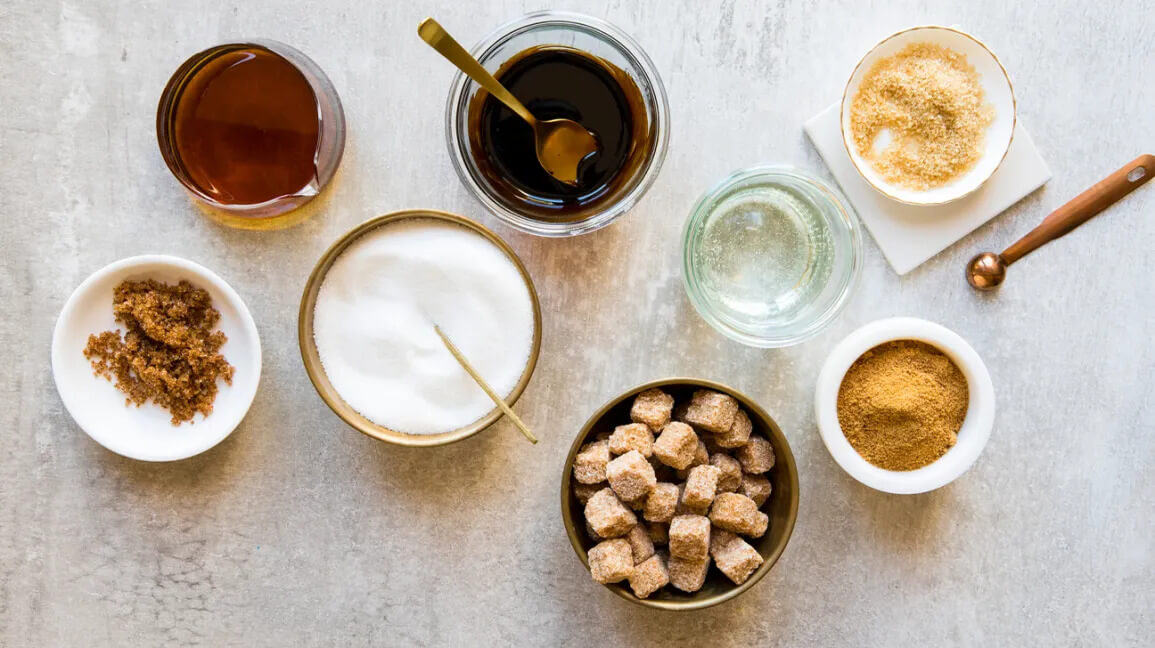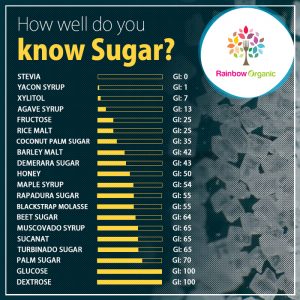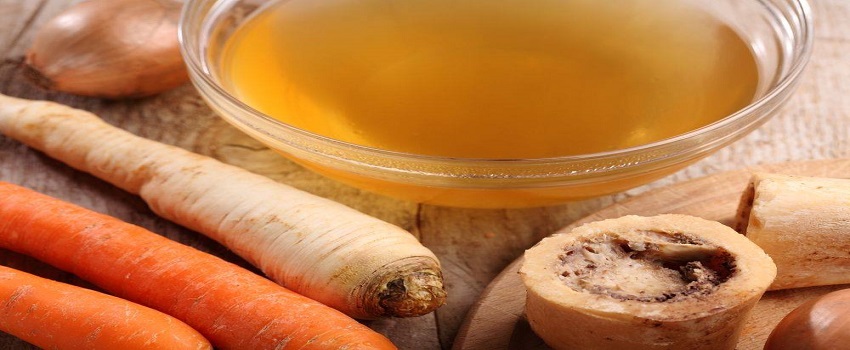We all consume different kinds of sugars daily but barely have any knowledge about the sugar percentage of different sugars. Glycaemic Index (GI) is the determinant factor of impact sugars have on blood sugar. Sugars with a high GI are reasons for various kind of diseases like obesity, diabetes etc.
Here is a list of various kinds of sugars with their GI:
- Fructose
Fructose is the commonest sugar found in honey, corn, fruits and some vegetables. It is manufactured as white crystalline sugar and can be digested easily in the body as it doesn’t need insulin to break down.
GI: 25
- Demerara Sugar
This sugar is made from the cane syrup obtained by pressing sugarcanes. The final product we get after dehydrating the cane syrup are golden brown crystals rich in vitamins and minerals.
GI: 43
- Agave Syrup
Agave syrup is obtained by pressing agave plant and the liquid obtained has a vanilla aroma. Agave syrup is high in fructose & low in glucose and retains the nutritional properties of the plant.
GI: 13
- Barley Malt
Barley syrup/malt is obtained by cooking sprouted dry barley. This dark brown syrup has a taste like malty molasses.
GI: 42
- Dextrose
Commonly known as glucose, dextrose is obtained from corn starch, sugar beet and sugarcane.
GI: 100
- Honey
Honey is a sugar made by bees from plant nectar. It is 20% water, 40% fructose, 30% glucose & 1% sucrose and the rest percentage comprises of vitamins, minerals and enzymes.
GI: 50
- Beet Sugar
It is obtained by refining beetroot vegetable and contains 99% sucrose. It is a good alternative for people allergic to white sugar.
GI: 64
- Stevia Rebaudiana
It is a herb that is normally grown for its sweet leaves. It can be used in cooking in either liquid or powdered form.
GI: 0
- Maple Syrup
Maple syrup is obtained by boiling and pressing the sap of Maple tree. In stores, you should only buy pure maple syrup as it is rich in vitamins and minerals.
GI: 54
- Juice Concentrates
Juice concentrates are formed by evaporating fruit juice in a vacuum. They can be used to sweeten curd, chutneys, smoothies, ice creams or to make refreshing drinks.
GI: GI of different fruit concentrates depends on the GI of the fruit from which they are obtained.
- Rice Malt
Rice malt/syrup is obtained by breaking rice grains and cooking them to form a thick sticky mixture. It is used in cooking as dips, salad dressing or as a sweetener in vegetable recipes.
GI: 25
- Muscovado Syrup
It is formed by boiling sugar cane juice and not taking the process further to the crystallization stage. It tastes like toffee and is used to flavour desserts.
GI: 65
- Xylitol
This sugar is found in vegetables, fruits and trees and is mainly extracted from corn cobs and birch trees. Xylitol does not result in formation of detrimental bacteria and thus is used to sweeten chewing gums and toothpastes.
GI: 7
- Sucanat
Sucanat is obtained from sugarcanes but it does not have crystalline texture. It is coarse in texture and contains less sucrose than white sugar.
GI: 65
- Rapadura Sugar
Rapadura sugar is evaporated, unrefined sugar and it is not separated from the molasses in the process of making thus it’s a non-chemical form of sugar and can easily substitute brown and white sugars.
GI: 55
- Turbinado Sugar
It is produced by steaming and centrifuging unrefined raw cane sugar. It is golden brown in colour and has a crystalline texture.
GI: 65
- Palm Sugar
It is obtained from the sap of date trees. The sugar is golden brown in colour and gooey in texture.
GI: 70
The info given about the GI of various sugars will keep you aware about the effect of different sugars on your blood sugar level.









